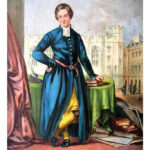The University of Illinois is set to captivate fans with the unveiling of their new throwback uniforms, a nostalgic nod to their rich football heritage. A standout feature of these uniforms is the meticulously crafted helmet, designed to replicate the iconic look of leather helmets from a bygone era. This article delves into the intricate process behind creating these unique “leather” helmets, a key element in honoring Illinois’ football legacy.
Recreating Gridiron History: The Leather Helmet Vision
For the Illinois Fighting Illini, simply evoking the spirit of vintage football wasn’t enough. They aimed for authenticity, specifically setting their sights on recreating the distinctive appearance of leather helmets. This vision led them to Armando Villarreal, a specialized airbrush artist based in southern Nebraska. Villarreal, recognized as one of only two experts nationwide in airbrushing football helmets to achieve such realistic effects, was entrusted with this unique task. His expertise was crucial to bringing the leather helmet concept to life.
The Art of Illusion: Hand-Painting Leather Texture
The process Villarreal employs is far from simple, demanding both skill and patience. Each helmet undergoes a detailed transformation to convincingly mimic aged leather. The initial step involves sanding down the standard helmet shell to prepare the surface. A sealer is then applied, creating a foundation for the subsequent layers of paint. Next, Villarreal applies a base coat, setting the stage for the leather-like texture. Once dried, the helmets are deliberately scuffed, adding subtle imperfections that enhance the realistic feel of aged leather.
The color palette then shifts to dark brown, meticulously sprayed to cover the helmet. To further enhance the illusion of genuine leather, Villarreal utilizes stencils, carefully applying patterns that replicate leather grain and texture. After this layer dries, the artist’s fine detailing truly comes into play. Using airbrush techniques, Villarreal hand-paints elements like straps, stitching, and even simulated holes onto the helmet surface. These details are critical in mirroring the construction and appearance of the leather helmets famously worn by football legends like Red Grange and the Illini team of 1924. Finally, a clear matte coating is applied to each helmet, providing protection and completing the authentic, non-glossy leather aesthetic. Each helmet requires between one to two hours of Villarreal’s dedicated artistry, a testament to the commitment to detail.
Capturing the Essence of a Century Ago
Equipment director Rosch emphasized the importance of this painstaking approach. “100 years ago, the jerseys all had very similar designs, so we knew what would set us apart in that overall aesthetic was a leather helmet and to create that textured look,” Rosch explained. He highlighted the specific details they aimed to replicate: “On the helmet, there are straps that go over the top and form a sun pattern, but the only way to accomplish that was for it to be hand-painted. For each individual piece of leather that was on a leather helmet, we wanted it to be reflected on the shell of the helmet so it looked like you were wearing that helmet.” Rosch lauded Villarreal’s contribution, stating, “Armando has done a really great job and been a really good partner in this whole process.” This partnership and dedication were essential to achieving the desired level of historical accuracy and visual impact.
From Concept to Gridiron: The Uniform Design Journey
The creation of these throwback uniforms was not a rushed endeavor. The design process spanned nearly two years, beginning with an extensive conceptual phase lasting six to eight months. During this time, the Illini team developed initial designs and explored various aesthetic directions. Collaboration with Nike was a crucial next step, as they worked closely to refine the designs and finalize the uniform’s overall look. Conference approval marked a significant milestone, setting the stage for the uniforms to move from concept to reality.
Director of Athletics Josh Whitman’s involvement was also instrumental. As an alumnus of the Illinois football program and an experienced administrator, Whitman brought a unique perspective to the project. Rosch noted Whitman’s personal connection: “He has a little extra tie to the project as a whole because it represents something really personal to him.” Whitman’s vision and feedback were integral in shaping the final design, ensuring the throwback uniforms resonated with both the team’s heritage and his own personal history with the program. Numerous small adjustments and tweaks were made throughout the process to align with Whitman’s vision and ensure the final uniforms effectively captured the intended historical essence.
A Nod to the Past, Ready for the Future
The Illinois Throwback Uniforms are more than just a change in attire; they represent a deep respect for the program’s history and a commitment to honoring its traditions. The meticulous attention to detail, particularly in the hand-painted leather helmet design, showcases the dedication to authenticity and visual impact. As the Illini take the field in these striking uniforms, they will be carrying forward the legacy of past generations, blending historical inspiration with contemporary football.

